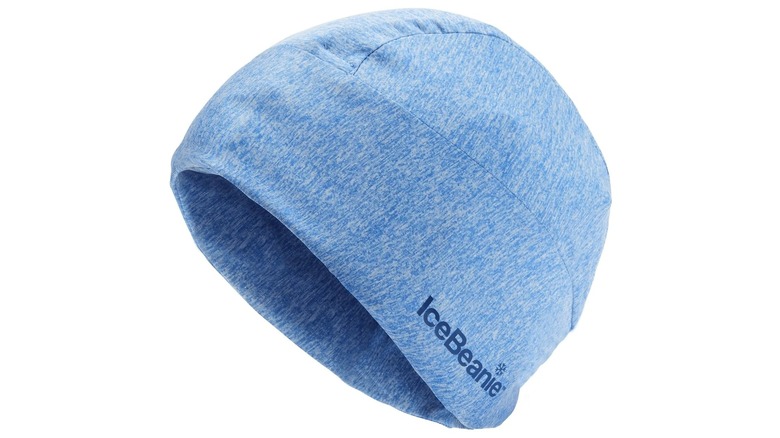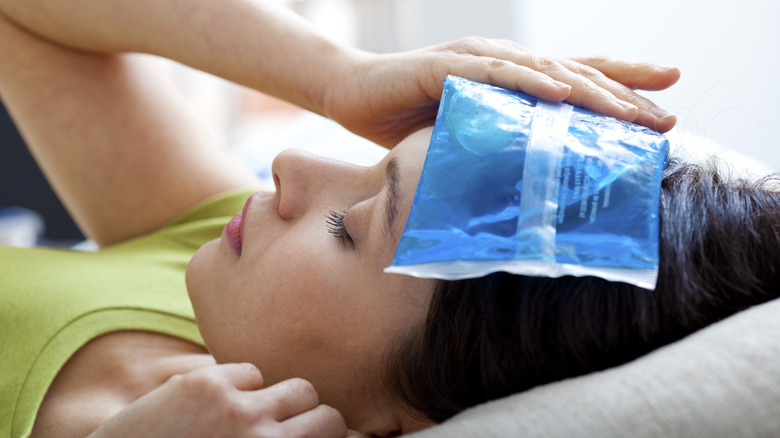Where Is IceBeanie From Shark Tank Season 12 Today?
We may receive a commission on purchases made from links.
IceBeanie founder Nic Lamb's journey into the health and wellness industry has been a wild ride — literally. Developing a love of surfing at a young age, Lamb quickly went on to build a professional, record-breaking career in competitive big-wave surfing (via IceBeanie). Competing worldwide, the entrepreneur conquered some of the globe's largest and most dangerous waves.
Lamb was riding the world's most massive waves — measuring in at over 70 feet high (via BBC Sport) — in Nazare, Portugal when he fell and suffered a concussion. For months following the injury, the athlete experienced debilitating migraine headaches that could not be quelled with more traditional migraine-relief treatment methods. In response, Lamb developed the IceBeanie. Appearing on Season 12 of "Shark Tank," Lamb reported that, by coupling compression therapy together with cold therapy, the snug blue cap had successfully done away with his post-concussion migraine pain.
Capturing the attention of big-name customers, such as award-winning actress Geena Davis, IceBeanie's goal has always been to provide consumers with a natural migraine-relief alternative to medication. So, is IceBeanie still going strong today?
How IceBeanie works
IceBeanie continues to maintain a presence today. Consumers can still purchase the caps online, including through Amazon. However, you'll have to check back as IceBeanie is currently listed as sold out if purchasing through the company's website. IceBeanie also remains active on social media, regularly posting migraine infographics on Instagram as well as periodically uploading TikTok videos.
For those curious as to how the product works, IceBeanie contains gel packs. All one needs to do is leave the product in the freezer for about an hour before securing it on their head for fast-acting migraine relief for adults and kids alike, the company explains. In addition to migraines, IceBeanie's compression cold therapy is said to also be effective against hangovers, inflammation, fever, stress, and more.
The American Migraine Foundation reports that 1 in every 4 households across the country has a family member affected by migraines. Knowing this, what's the science behind compression cold therapy, and how is it so powerful against headache pain?
What makes compression cold therapy so effective?
Both compression and cold therapy as potential means of migraine relief have been studied for quite some time now. Researchers from a 2013 clinical trial published in the Hawai'i Journal of Medicine & Public Health noted that cold therapy is the top home-treatment method used in cases of migraine without aura, while compression is the No.1 treatment used in cases of migraine with aura, with cold therapy coming in second place.
Results from an early 1988 study published in the scientific journal Headache outlined how a cooling device secured to the head and neck of recurrent headache patients (along with a warming device applied to the very top of the head) successfully reduced symptoms of migraine, tension headaches, and cluster headaches in 22 out of the 28 study participants. Similarly, a 1993 study also published in Headache revealed that applied pressure of an ice pack strapped to patients' heads with an elastic band successfully relieved 60 out of 69 total headache cases studied.
Researchers believe that cold therapy may play a role in migraine relief by prompting the constriction of dilated blood vessels. The same is thought to be true with scalp compression. Cold therapy can also help reduce tissue swelling and slow nerve activity, thereby reducing pain sensations.



